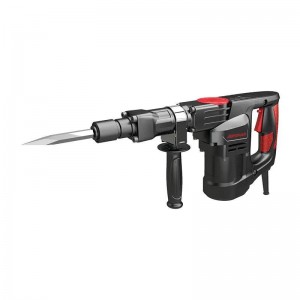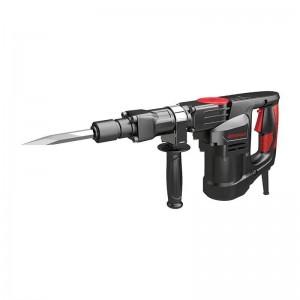In the world of construction and DIY projects, a reliable and compatible drill bit is essential for the efficient operation of a hexagonal hammer drill. Making the wrong purchase can lead to inefficiencies, damage to the drill, and sub – par results. Here are five key points to help you ensure the compatibility of your hexagonal hammer drill bits and avoid costly mistakes.
1. Match the Shank Type Precisely
The shank of the drill bit is the part that attaches to the drill. Hexagonal hammer drills are designed to work with specific shank types, and it’s crucial to get this right. Hexagonal shanks, as the name implies, have a six – sided shape that fits snugly into the corresponding chuck on the drill. Unlike some other types of drills that may accept round or square – shanked bits, hexagonal hammer drills require a precise hexagonal fit.
For example, if you have a Bosch hexagonal hammer drill, it’s engineered to work optimally with Bosch – branded hexagonal – shanked bits. Using a bit with the wrong shank type, such as trying to force a round – shanked bit into a hexagonal chuck, not only won’t provide a secure connection but can also cause the bit to wobble during operation. This wobbling can lead to uneven drilling, reduced accuracy, and increased wear and tear on both the bit and the drill’s chuck.
2. Consider the Drill’s Power and Capacity
Every hexagonal hammer drill has a specified power rating and capacity, which should be taken into account when choosing a drill bit. A more powerful drill can handle larger and more robust drill bits, while a less powerful one may struggle.
If you have a high – powered professional – grade hexagonal hammer drill, it can efficiently drive larger diameter and longer hexagonal bits through tough materials like concrete or stone. However, if you use a bit that is too large for a low – powered drill, the drill may not be able to generate enough torque to rotate the bit effectively. This can result in overheating of the drill motor, reduced drilling speed, and even damage to the drill in extreme cases.
Conversely, using a very small bit in a high – powered drill may not be a problem in terms of the drill’s ability to drive it, but it may not fully utilize the drill’s capabilities, leading to inefficient use of energy and potentially longer drilling times than necessary.
3. Evaluate the Bit’s Material Compatibility
The material of the drill bit must be suitable for the material you intend to drill. Different materials require different types of bits. For example, when drilling into concrete or masonry, you need a bit with a carbide – tipped end. Carbide is extremely hard and can withstand the abrasive nature of these materials without dulling quickly.
If you’re using a hexagonal hammer drill to work on metal, a high – speed steel (HSS) bit may be more appropriate. HSS bits are designed to cut through metal effectively, but they would not be suitable for concrete as they would wear out rapidly. Using the wrong bit material for a particular task can not only make the drilling process difficult but also significantly shorten the lifespan of the bit.
Moreover, some materials may require specialized bits. For instance, drilling into tile may require a bit with a diamond – coated tip for better cutting performance and longer durability. Always research the best bit material for the specific material you’ll be working with to ensure compatibility and optimal results.
4. Check the Bit’s Diameter and Length Specifications
The diameter and length of the drill bit are crucial factors in ensuring compatibility. The diameter of the bit should match the requirements of your project. If you’re drilling holes for small screws or fasteners, a smaller diameter bit will be needed. On the other hand, if you’re creating larger holes for pipes or conduit, a larger diameter bit is essential.
In addition, the length of the bit must be appropriate for the depth of the hole you need to drill. A bit that is too short won’t reach the required depth, while a bit that is too long may be cumbersome to handle and can also cause stability issues during drilling. For example, if you’re installing a shelf and need to drill into a wall to anchor it, measure the depth of the hole needed based on the length of the anchor you’ll be using. Then, select a hexagonal drill bit with a length that can comfortably reach that depth without being overly long.
5. Research the Brand and Model Compatibility
Finally, it’s a good idea to research the compatibility between the brand and model of your hexagonal hammer drill and the drill bits you’re considering. Some manufacturers design their drills to work best with their own brand of bits. For example, Makita hexagonal hammer drills may have specific design features that are optimized for Makita – branded hexagonal bits.
Even if a bit from another brand physically fits into your drill, it may not perform as well as a bit that is specifically designed for your drill model. Reading product reviews and checking the manufacturer’s recommendations can provide valuable insights. Some manufacturers may also offer compatibility charts or lists of approved drill bits for their specific drill models, which can be a great resource when making your purchase decision.
By paying attention to these five key points – shank type, drill power, bit material, diameter and length, and brand/model compatibility – you can ensure that the hexagonal hammer drill bits you purchase are fully compatible with your drill. This will not only make your drilling projects more efficient but also extend the lifespan of both your drill and the drill bits, saving you time and money in the long run.
Post time: Jun-03-2025


